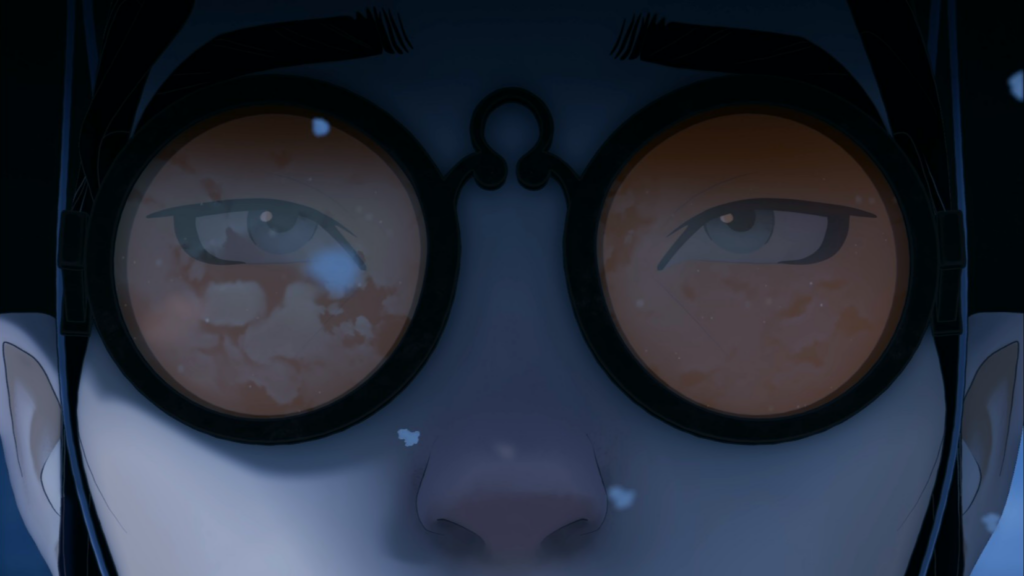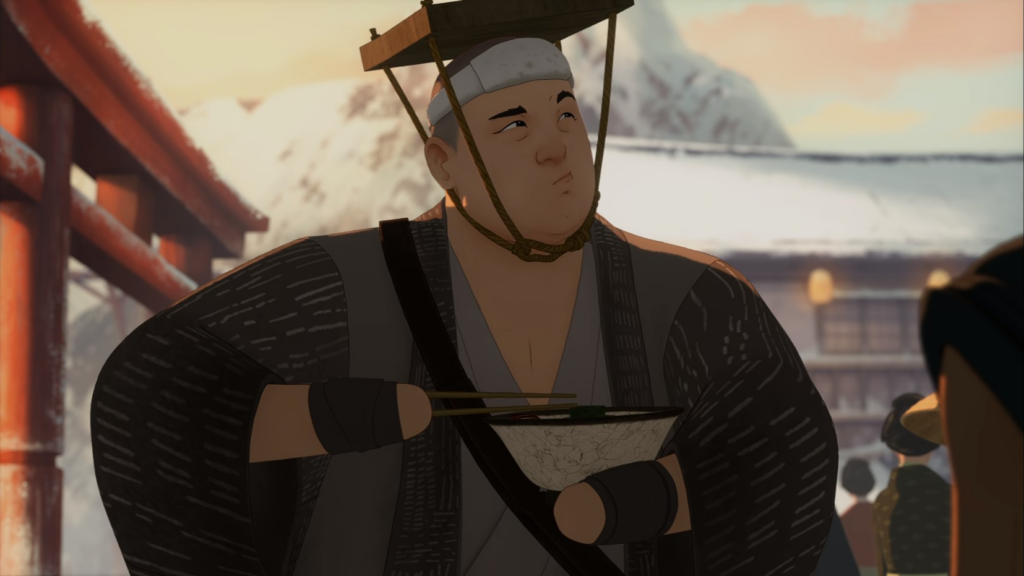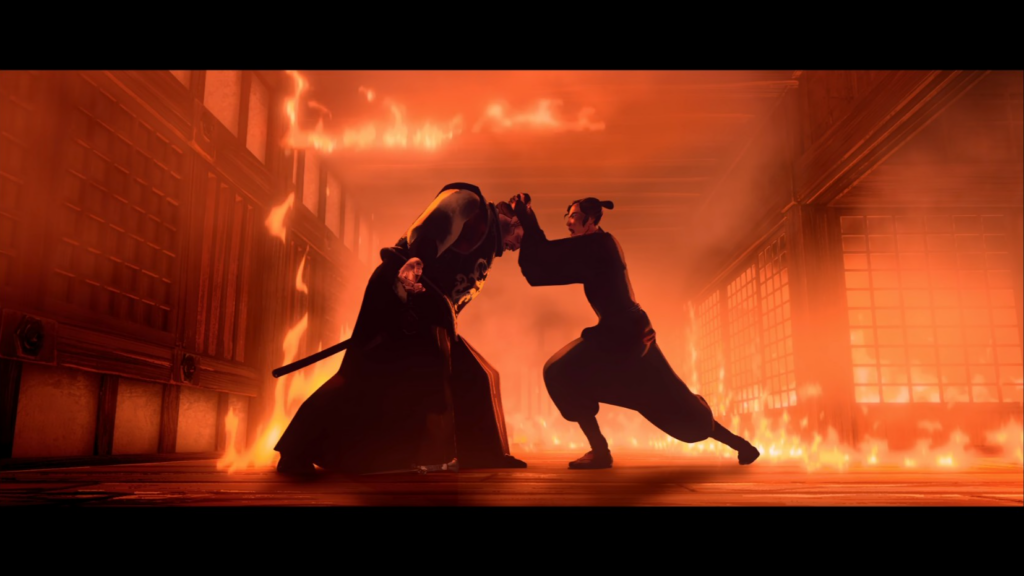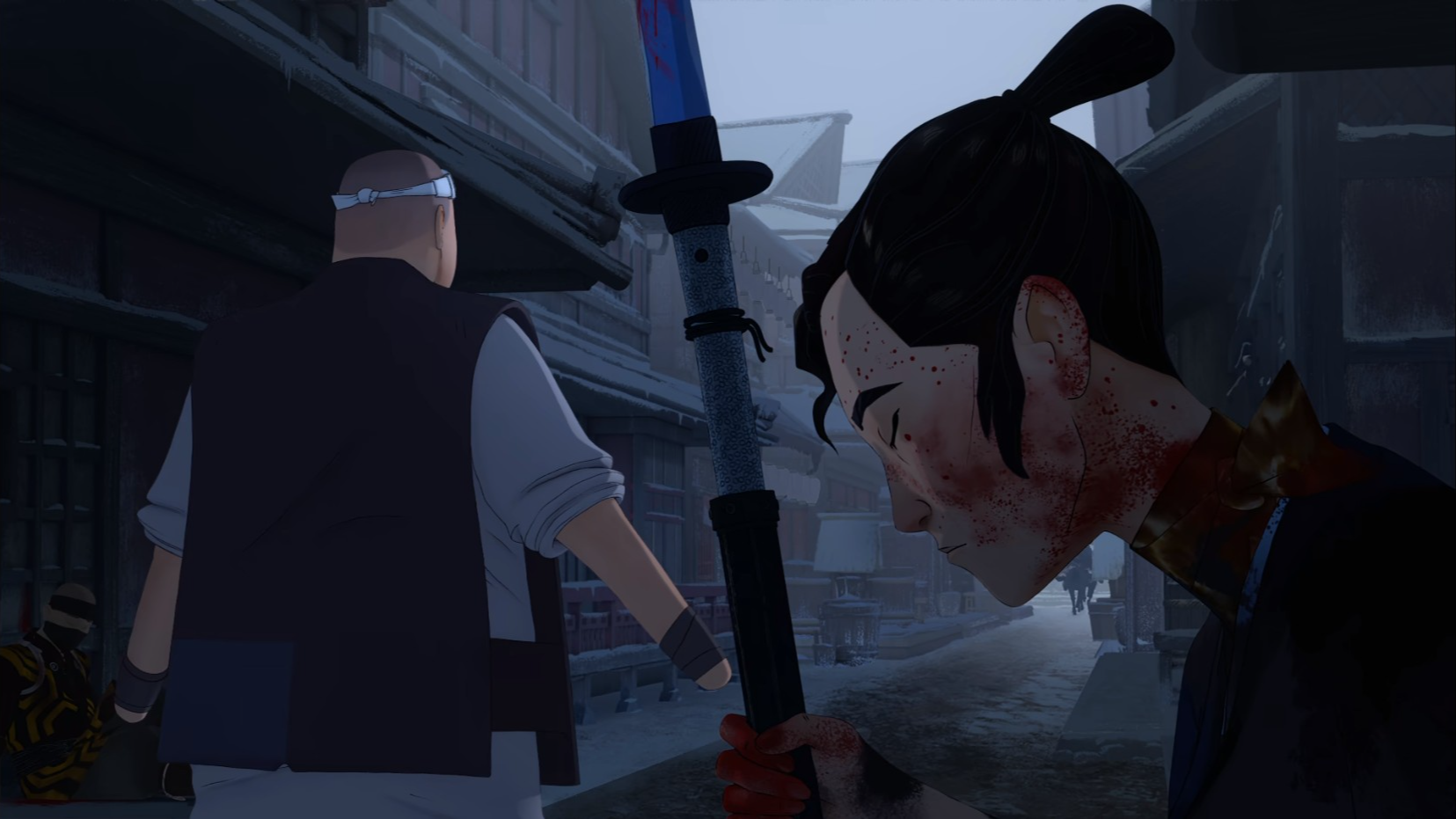Every once and awhile, Netflix surprises you with something they don’t overtly go out of their way to advertise, and unless you’re a film and television nerd with your finger on every announced project, wouldn’t immediately notice. Michael Green, known for Smallville, Heroes, and American Gods, teams up with his wife Amber Noizumi, and a number of staff from previous shows, to come up with a fantastical revenge plot centered in the Edo Period of Japan circa 1600s. With animation by Blue Sprit, whose last stateside credit was Marvel’s What If…? series, Blue Eye Samurai offers eight 40-50 minute episodes of what I suppose could be feudal sex, drugs, and rock-and-roll. The creators list a number of books and film references studied during production, including Kill Bill, Zatoichi, Once Upon a Time in the West, and the Samurai trilogy. Unlike Rurouni Kenshin, an anime most my age and prior might’ve considered our gateway into that genre of mixed fiction-historical period samurai showdown sort of thing, Blue Eye Samurai’s lead character, a half-English, half-Japanese woman named Mizu, seeks the most absolute revenge afforded by Netflix’s purse-to-computer-assisted-animation against both her domestic enemies, and especially the “four white men in Japan” responsible for her existence, and pain. It’s quite the tale that perhaps puts The Bride’s revenge quest to shame, though I suppose that’d be the modern try.
If you have not seen Marvel’s What If…? then you will probably be slightly jarred by Blue Sprit’s animation style in this series. It’s very detailed, but not quite 30FPS especially in the battle scenes where the “camera” tries to move without the characters moving. It feels like a bit of rotoscoping was used, but to considerably less notice than in What If…? They make up for it with amazing close-up shots of characters, especially in faces, eyes, and details of their clothing, hair, and accessories. After all, you’re supposed to be immersed in Edo Period Japan, and it’s a period known for class-specific clothing and details. It’s especially apparent with Akemi scenes, as being a princess soon-to-be-engaged to the Shogun’s son (sorry Mike Chan Taigen) means she has all the nice adorned kimonos and otherwear. I was never particularly super interested in the more nuance history of Japan anymore than I am of the Americas, Europe, or anywhere else. History was always a subject I was good at because I liked to read about places, about people, and about experiences. But when it came to immersion, roleplay, or wanting to be a part of that larger world, I chose science fiction, space, and fantasy. I had a good friend in high school who introduced me to the Japanese Club in my senior year. They were more interested in those deeper-dives of Japanese culture and history. I just liked anime, anime tits, and video games. I ended up dating and banging a girl of similar interest, and it ended up being an extremely toxic relationship. If I could do that all over again, I’d have maybe talked more to the girlfailures instead.

Speaking of girlfailure, which I’m told is some new counter-term to girlboss that is rising the ranks, I’d say that Mizu probably fits the bill, and is what makes this series much more watchable than you’d think. Because if you go into this thinking “Oh, she’s just going to be an unstoppable Mary Sue killing machine obliterating everything in her path no matter what” then you’re going to either have a bad time, or be pleasantly surprised. The entire premise is designed to explain how she’s able to acquire and understand her skillset, but instead of executing masterclass plans of stealth and intrigue, she quite literally just busts through every wall and shouts I’M DARTH VADER, BITCH, rolls a nat-twenty, and her enemies just fucking die. But not before she gets stabbed, gouged, punched, thrown, slammed, and beaten almost every fight. Physical damage aside, there is plenty of psychological damage. Constantly questioning her existence, her motives, her reasons for revenge, and especially her relationships with others. Ringo is such a loveable oaf in this show, and the showrunners note that a person like him in that era would have suffered more cruel of a fate than they afforded him, assuming they weren’t just disposed of as an infant. They took care to try and preserve as much of the historical context as they could, but indeed made some modern conveyances for some of the characters to add spice to the series. Which for Ringo, the noodles are the best part.

As for the voice cast, while there is a Japanese voice option if you really want to lean into that, it is meant to be watched in English, and has a very good English VA cast. PEN15′ Maya Erskine voices Mizu, Masi Oka aka Heroes’ Hiro Nakamura himself voices Ringo, Station 19’s Brenda Song voices Akemi, and Never Have I Ever’s Darren Barnet voices Taigen. Add into that names like the great George Takei, Ming-Na Wen, Randall Park (Jimmy Fucking Woo kills it as Heiji Shindo), and Kenneth Branagh because if you’re gonna have a European voice in your Edo Period series, a Royal Shakespeare Company alumni and Henry V star ain’t a bad idea. I was seriously impressed with the voice acting maybe slightly more than the animation or story. Maybe that is because I am old enough to remember Americanized and poor dubs on live-action and animated fare alike that made no attempt at correct pronunciation or period-specific slang. But also the talent they selected played their parts so well. Takei is always a gem for me, being a Trek fan, but he would play the most convincing surrogate parent. Ming-Na Wen is also always a gem for me, being a Wars fan. Fennic Shand playing feudal dommy mommy is some real head-turning shit.

If you’re into samurai and grindhouse cinema, this will most certainly tickle those bells for you. Kill Bill gets a lot of mention likely because like it, the show makes use of several songs during fights in the same way that movie was scored. It even includes a Japanese vocal rendition of Metallica’s “For Whom the Bell Tolls” which is a neat touch. Overall, I quite liked the series, and I assume given its ending, they are setting it up for more down the road.
Circling around to the start of this post, why does Netflix do this shit where they keep these sleeper shows on the shelf until after everyone hates them for their latest backpedal on sharing passwords, price hikes, or stance on the SAG-AFTRA strike, and then go HERE IS THE GOOD SHIT, DRINK UP, ASSHOLES! It’s almost like a fourth-level taunt, that you’re still giving them money no matter what they do, but being the kindler, gentler machine gun, they still serve you top-shelf. It’s real fucking annoying, actually, because they did this back with Knights of Sidonia almost ten years ago. They did it with the reboot of Danger Mouse, which I guess they’ll never touch again. The reimagined Carmen Sandiego. More recently, they finally got Nimona out for the world to see. Netflix has this incredible ability to bankroll and distribute some good fucking choice cuts of eastern and western animation, and they just don’t market it nearly to the same level as FOX blasts its ANIMATION DOMINATION block, which at this point is just their longest-running same-shows and one or two other shows that rotate every 1-3 years. Bring me more of this shit, hell, go get Gendy, Craig, and all those Cartoon Network golden era alumni, get somemore European, Korean, and Japanese studios on board, and go fucking nuts. Make Netflix great again.
Final Score: Nine Deep Blue Something Cuts out of Ten Swordfather contemplations of changing careers and going into Kabuki to get away from Mizu and Ringo’s bullshit.

